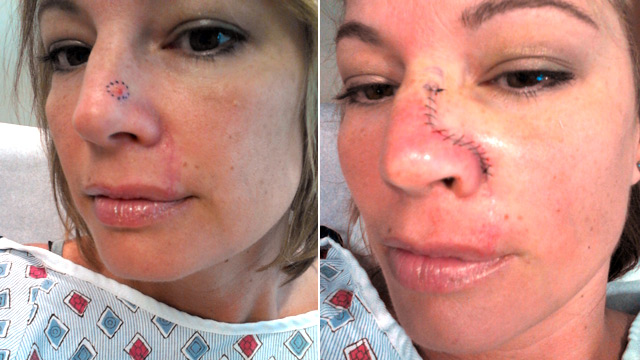User Beware
"We're seeing an uptick in melanoma cases and deaths among young women. Are we going to look back in 15 to 20 years from now and wish we'd been more forceful about moving this process forward?"
J. Leonard Lichtenfeld, deputy chief medical officer, American Cancer Society
Tanning salons have been identified as a direct threat to human health. Moreover, they have been cited as posing a high risk for three types of cancer, causing malignant lesions through exposure to UVA and UVB rays with the ubiquitous use of tanning beds among young women in particular. Resulting in health authorities from Brasilia to Sydney and Vancouver taking steps to ban tanning salons.
Research results published in the British Medical Journal should logically have the result of tougher laws and warnings enacted on the dangers of ultraviolet radiation-emitting tanning machines. The tanning industry is a lucrative one with huge sales figures. And it would figure, as a result, that they have a powerful lobby making a strenuous effort to protect their $5-billion in annual economic activity in the United States alone.
British Columbia has banned anyone under the age of 18 from using ultraviolet tanning equipment unless it comes accompanied with a medical prescription. Quebec passed a law banning minors from tanning salons, as well. Ontario is set to follow suit. California and Vermont have taken research results seriously enough to ban under-18s from indoor tanning studios. Europe has laws prohibiting teens from tanning beds in 22 countries.
It's estimated that fully a third of sunbed operators in Australia have gone out of business because of law-enforced age limits to exposure to tanning salon ultraviolet rays which evidence demonstrates cause all three types of skin cancer. A prevalence particularly pronounced among young people under 25 years of age. Typically, young Caucasian women flock to tanning parlours.
The World Health Organization's International Agency for Research on Cancer added ultraviolet radiation from exposure through the use of tanning beds to their list of dangerous carcinogens, which includes as well radon and plutonium. You can't get a more morbid classification than being placed in that deadly company.
The U.S. Centers for Disease Control and Prevention stated in a May report that indoor tanning undertaken before age 35 increases the risk for melanoma, the deadliest form of skin cancer, by 75%. Two Australian states will ban salons by 2015. Brazil banned cosmetic tanning three years earlier. The major supplier of products for UV tanning was Amsterdam-based Royal Philips Electronics NV; it has discontinued producing those items.
"The business is becoming more and more tainted as the evidence becomes clearer", according to Craig Sinclair, head of the WHO's Collaborative Centre for UV Radiation. In Melbourne tanning operations saw a 67% drop since a law restricting access to adults 18 and older was enacted.
In the United States, where the FDA ranks tanning machines as safe to use, over 3.5-million skin cancers in 2 million people are diagnosed annually.
According to the International Skin Cancer Foundation in New York, over 90% of all skin cancers are related to radiation exposure, most from the sun. Tanning bed use compounds the exposure of human skin to the sun since they emit radiation stronger than the long-wave UVA and shortwave UVB rays that reach the Earth naturally.
UVA output from indoor tanning machines is four times greater and UVB output twice as high as compared to exposure to sunlight at high noon during the summer months. Both radiation types are capable of weakening the immune system and increasing cancer vulnerability, along with other diseases. Simply put, tanning lamps produce DNA damage to skin associated with cancer.
In cities like San Diego, sunbed salons are greater in number than outlets for Starbucks coffee and McDonald's restaurants. And while 33 American states have laws ensuring access to indoor tanning is restricted under a certain age, there's a long way to go to ensuring protection for girls aged 14, 16 and 18 who flock to those tanning enterprises.

PHOTO: Kim Benz, a regular tanning bed user since her teens, was diagnosed with skin cancer in her early 20s.
Courtesy Kim Benz
Image from
Labels: Child Abuse, culture, Drugs, Health

0 Comments:
Post a Comment
<< Home